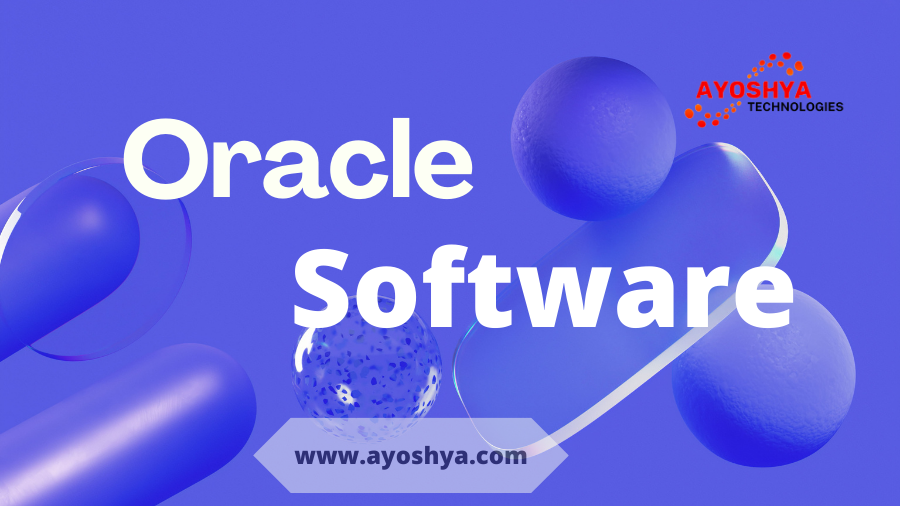Potency of Oracle Software: A Deep Dive into Digital Innovation
Welcome to the realm of Oracle Software, a technological marvel that transcends the ordinary, reshaping the digital landscape. In this exploration, we’ll uncover the evolution, features, industry applications, and the future trends of Oracle Software.
1. Introduction
Oracle Software, crafted by Oracle Corporation, is not merely a suite of applications; it’s a catalyst for digital transformation. This article serves as your guide to the profound world of Oracle Software.
2. The Evolution of Oracle Software
Originating in the late ’70s as a relational database management system, Oracle Software has evolved into a multifaceted suite, adapting to the dynamic needs of the digital age.
3. Key Features of Oracle Software
3.1 Data Dynamo: Oracle Database
At the heart of Oracle Software lies the mighty Oracle Database, renowned for its scalability and efficiency. It is the powerhouse managing colossal volumes of data for businesses.
3.2 Guardian of Information: Security Measures
In an era rife with cyber threats, Oracle Software stands guard with advanced encryption, strict access controls, and comprehensive auditing, ensuring the fortification of data.
3.3 Skyward Bound: Cloud Integration
Oracle’s venture into cloud computing is more than a trend; it’s a strategic elevation. Oracle Cloud Services provide businesses with the wings to soar, offering flexibility and scalability.
3.4 Catalyst for Creativity: Application Development
Oracle Software isn’t just about data management; it’s a canvas for innovation. With Oracle Fusion Middleware, developers weave applications seamlessly, fostering a realm of creativity.
4. Navigating Oracle Software Products
4.1 Oracle Database Unveiled
The cornerstone , Oracle Database, comes in various editions, tailored to businesses of all sizes. Its reliability and performance have set industry benchmarks.
4.2 Embracing the Cloud: Oracle Cloud Services
Oracle Cloud Services mark a paradigm shift, providing Infrastructure as a Service (IaaS), Platform as a Service (PaaS), and Software as a Service (SaaS), transforming how businesses operate.
4.3 Bridging Gaps: Oracle Fusion Middleware
The unsung hero, Oracle Fusion Middleware, seamlessly integrates applications, supporting various programming languages and frameworks, making it the backbone of innovation.
4.4 Orchestrating Business: Oracle ERP and CRM Solutions
Oracle’s Enterprise Resource Planning (ERP) and Customer Relationship Management (CRM) solutions aren’t just tools; they are strategic assets, streamlining processes and enhancing customer experiences.
5. Oracle Software Across Industries
5.1 Healing with Bytes: Transforming Healthcare
In the healthcare sector, It revolutionizes data management, fostering interoperability and security in patient records.
5.2 Financial Frontiers: Oracle in Finance
Financial institutions leverage for secure and efficient transactions, revolutionizing the landscape of digital transactions.
5.3 Manufacturing in the Digital Age
Manufacturing industries benefit from Oracle’s ERP solutions, optimizing supply chain management and production processes.
5.4 Retail Reinvented: Oracle in the Shopping Cart
Retailers leverage Oracle CRM solutions to enhance customer experiences, tailoring offerings to individual preferences.
6. Oracle Software vs. the Tech Titans
6.1 Oracle vs. Microsoft: Battle of Titans
While Microsoft offers competitive solutions, Oracle’s focus on database management and cloud services positions it as the preferred choice for enterprises with complex needs.
6.2 Oracle vs. SAP: Decoding ERP Wars
Oracle and SAP, both giants in ERP solutions, cater to different business requirements. Choosing between them depends on specific organizational needs.
6.3 Oracle vs. IBM: Clash of the Databases
In the realm of database management, Oracle competes closely with IBM, offering robust solutions tailored for large enterprises.
7. The Marvels and Challenges of Oracle Software
7.1 A Symphony of Benefits
The benefits are diverse, including high performance, scalability, robust security features, and a wide array of solutions for various business needs.
7.2 Navigating Challenges: A User’s Guide
While implementing Software presents challenges, strategic planning, continuous learning, and embracing updates and patches form a user’s guide to navigating potential issues.
8. Implementing Oracle Software: A Strategic Approach
8.1 Blueprint for Success: Strategic Planning
A well-thought-out implementation plan is critical for the successful deployment of it. Understanding business requirements, defining objectives, and creating a realistic timeline are essential components.
8.2 Skill Sharpening: Continuous Learning
Proper training for end-users and administrators ensures the full realization of Oracle Software’s potential. Training programs provided by Oracle, coupled with ongoing education, keep users abreast of updates and best practices.
8.3 Riding the Waves: Embracing Updates
Staying current with software updates and patches is vital for security and performance. A systematic approach to updates ensures businesses avoid vulnerabilities and benefit from new features.
9. The Oracle Crystal Ball: Future Trends
As technology advances, It is poised to embrace trends such as artificial intelligence (AI), machine learning, and further integration with emerging technologies. This positions Oracle as a future-ready solution for businesses.
10. Conclusion
In conclusion, It is not merely a tool; it’s a strategic asset for businesses aiming to thrive in the digital age. From database management to cloud integration and application development, Oracle remains at the forefront of innovation, reshaping industries and driving digital transformation.
FAQs
1. Is Oracle Software suitable for small businesses?
Absolutely. it offers editions tailored for businesses of all sizes, ensuring scalability and efficiency.
2. How does Oracle Software ensure data security?
It employs advanced encryption, strict access controls, and comprehensive auditing to fortify data against cyber threats.
3. What makes Oracle Cloud Services unique?
Oracle Cloud Services provide a comprehensive suite, including IaaS, PaaS, and SaaS, offering businesses flexibility and scalability.
4. How does Oracle Software benefit the healthcare sector?
In healthcare, It revolutionizes data management, fostering interoperability and security in patient records.
5. What is the future outlook for Oracle Software?
It is expected to embrace future trends like AI and machine learning, positioning itself as a robust, future-ready solution for businesses.
Read More:
WHAT DOES AN ORACLE TECHNICAL CONSULTANT DO?



